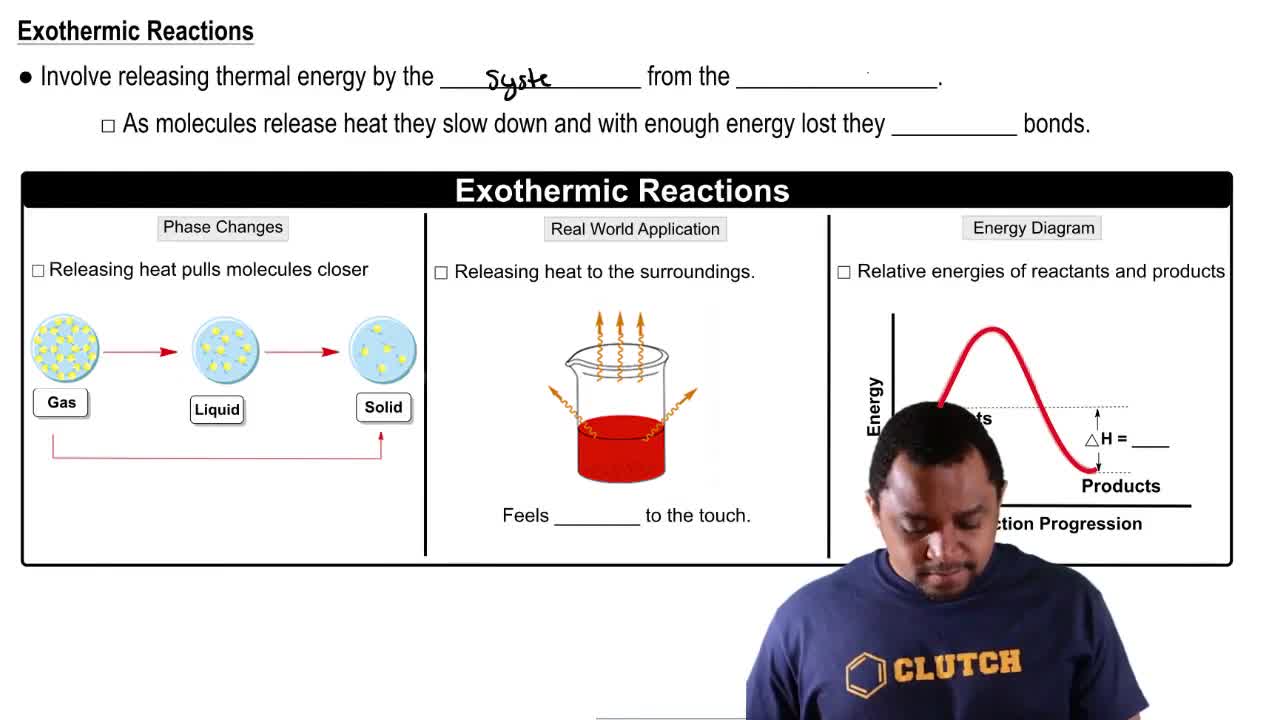Which of the following statements is true regarding the energy diagram provided?
i. The reaction is endothermic.
ii. The activation energy is +10 kJ.
iii. The reaction releases energy.
iv. The enthalpy of the reaction is –25 kJ.
 Verified step by step guidance
Verified step by step guidance Verified video answer for a similar problem:
Verified video answer for a similar problem:



 2:40m
2:40mMaster Energy Diagrams Concept 1 with a bite sized video explanation from Jules
Start learning